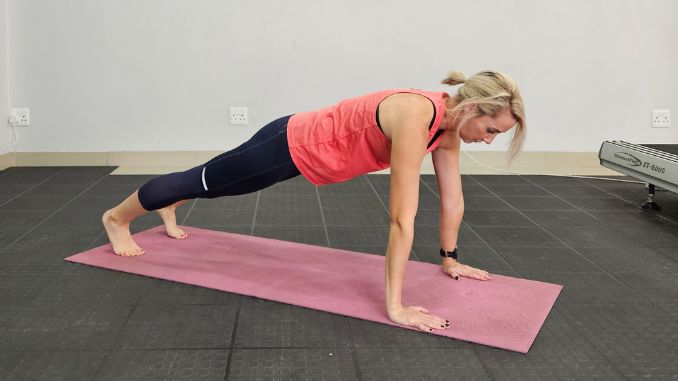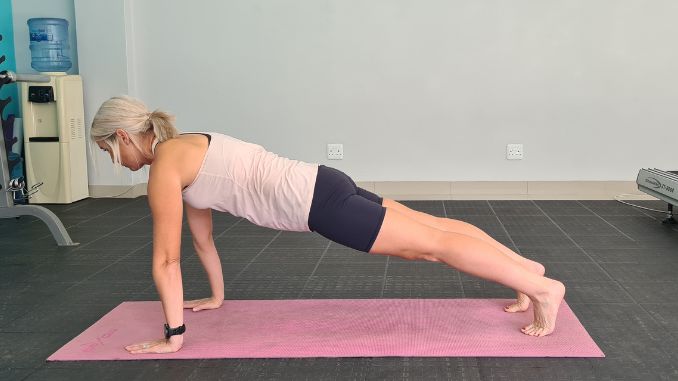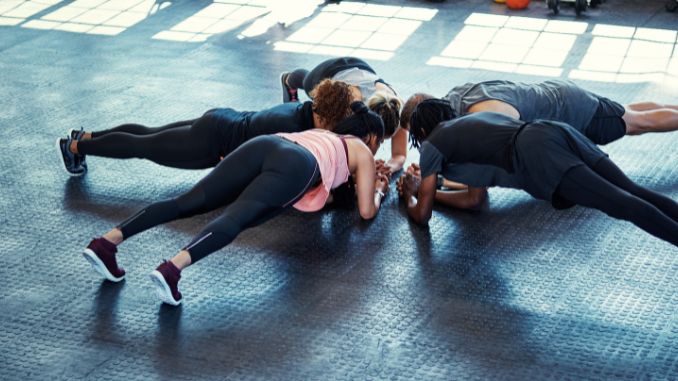Health and fitness [¹] are essential for a long, active, and happy life. It’s true that good health is the best wealth you can have. Simply put, taking care of your body is crucial. A healthy mind thrives in a healthy body. Both mental and physical health are important for keeping up the energy needed to succeed in life.
Your fitness journey begins with setting clear goals that motivate and guide your progress. Understanding why you want to get fit—whether it’s to feel healthier, more confident, manage stress, or improve overall well-being—helps you stay committed.
Reflect on personal experiences and future aspirations that drive your dedication to achieving a healthier lifestyle. By setting specific, measurable goals and keeping them visible, you can track your achievements and stay focused on your path to fitness success.
1. Setting Your Fitness Goals

Identify Your Reasons
- Think about why you want to start getting fit—whether it’s to feel healthier, more confident, manage stress, or just feel better overall.
- Consider what inspires you, like past experiences or goals for the future, that keep you committed to getting in shape.
Set Clear, Achievable Goals
- Define specific goals you can track and achieve, like losing weight, gaining muscle strength, or completing a fitness challenge.
- Make sure your goals are measurable, like running a certain distance or lifting specific weights.
- Set realistic timelines that fit your current fitness level and lifestyle.
Write Down and Display Your Goals
- Write your goals down on paper or digitally to commit to them and stay accountable.
- Put your goals in visible places, such as on your fridge, mirror, or phone screen, to remind yourself daily.
- Use tools like progress charts or checklists to track your progress and throughout your fitness journey.
2. Creating a Personalized Fitness Routine

Initial Assessment and Goal Setting
- Begin with a thorough evaluation of your current fitness level, strengths, and areas needing improvement.
- Set specific objectives such as weight loss, muscle gain, or overall fitness enhancement.
- Establish realistic timelines and milestones to measure your progress effectively.
Customized Exercise Programming
- Develop a well-rounded workout routine incorporating cardio (e.g., running, cycling), strength training (e.g., weightlifting, bodyweight exercises), and flexibility exercises (e.g., yoga, stretching).
- Modify exercises as needed to accommodate medical conditions or physical limitations.
- Ensure proper technique to maximize effectiveness and prevent injuries.
Nutritional Guidance
- Receive personalized dietary advice from a licensed nutritionist or dietician aligned with your fitness goals, emphasizing balanced meals and hydration.
- Learn about portion control, macronutrient balance, and the importance of nutrient-rich foods.
- Monitor your eating habits using calorie tracker apps or food journals and adjust as necessary to support your fitness journey.
Education and Lifestyle Integration
- Gain insights into exercise physiology, biomechanics, and the benefits of regular physical activity.
- Adopt lifestyle changes supporting overall well-being, including stress management and sufficient sleep.
- Access resources empowering informed decisions about your fitness journey.
3. Building Accountability and Support

Find a Workout Buddy or Accountability Partner
- Start by assessing your current fitness level, strengths, and areas needing improvement.
- Discuss specific goals like weight loss, gaining muscle, or overall fitness improvement.
- Establish achievable timelines and milestones to monitor your progress efficiently.
Use of Fitness Tracker or App
- Fitness trackers [²] are worn all day to record steps, physical activity, sleep patterns, and other health details. They collect this data continuously, which can then be synced to a mobile app and uploaded to the manufacturer’s servers.
- Key features to consider in a fitness tracker, such as heart rate monitoring and calorie tracking.
- Set goals and track progress over time to stay motivated and monitor improvements.
Share Fitness Goals and Progress
- Importance of sharing goals with a supportive friend, family member, or fitness professional.
- How sharing progress updates can provide accountability and encouragement.
- Discussing challenges and celebrating achievements together supports a positive fitness journey for everyone.
4. Developing a Healthy Lifestyle

Include Variety in Your Diet
- Eat a mix of vegetables, fruits, whole grains, lean proteins (like chicken, fish, tofu), and healthy fats (such as avocado, nuts, olive oil).
- Colorful foods like berries, spinach, carrots, tomatoes, and sweet potatoes offer diverse nutrients. They’re rich in antioxidants like vitamins C, A, and E, plus fiber, supporting overall health and disease prevention.
Successful Weight Management
- Plan your meals to make sure they’re balanced and nutritious, supporting your fitness goals.
- Prepare meals in advance to keep your diet consistent and save time.
Consulting with Nutrition Experts
- Get advice from a nutritionist or dietitian to create a meal plan that fits your fitness goals.
- Talk about your food preferences, allergies, and specific nutritional needs for better performance and overall health.
Tracking and Adjusting
- Use a food journal or nutrition app to track what you eat and make sure you’re meeting your nutrition goals.
- Adjust your meal plan based on advice from your nutritionist or changes in your fitness routine.
Hydration
- Stay hydrated throughout the day to help with digestion, nutrient absorption, and overall performance.
- Drink enough water, especially during workouts, to stay hydrated for peak performance.
5. Overcoming Obstacles and Staying Motivated

Celebrate Small Victories
- Recognize small victories, like completing workouts or reaching personal bests in strength or endurance.
- Reward yourself with small treats or incentives to reinforce positive progress.
- Reflect on these milestones to boost confidence and stay motivated on your fitness journey.
Stay Focused on Your Fitness Goals
- Regularly revisit and refine your fitness goals to keep them clear and relevant.
- Use visual reminders, like vision boards or lists, to stay focused and accountable.
- Regularly reflect on your commitment to maintain momentum towards your desired outcomes.
Navigate Setbacks with Resilience
- View setbacks as opportunities to learn and grow, understanding they are part of progress.
- Analyze what led to setbacks and adjust your approach or expectations accordingly.
- Seek support from personal trainers, fitness professionals, or peers to stay encouraged during tough times in your fitness journey.
6. Maintaining Long-Term Success
Establishing Consistent Exercise Habits
- Create a regular schedule for workouts each week.
- Fit physical activities into daily routines, like using stairs instead of elevators.
Exploring Enjoyable Physical Activities
- Try different exercises like jogging, swimming, or yoga to find what you enjoy.
- Join group fitness classes or sports leagues for motivation and socializing.
Embracing a Holistic Approach to Fitness
- Focus on overall well-being through exercise, nutrition, and mental health.
- Prioritize long-term health benefits to maintain a sustainable lifestyle.
Effective Cardiovascular Exercise Routine to Incorporate into Your Fitness Journey
Explore various cardio exercises like cycling [⁴], and HIIT (High-Intensity Interval Training) to improve cardiovascular health and endurance.
1. Walking

Walking can be very important [³] for preventing heart disease. Doctors can recommend walking to help patients get enough exercise and find the support they need.
2. Cycling

Biking, both outdoors and on stationary bikes, is a low-impact workout that strengthens legs and boosts heart endurance. Studies have shown that adults who bike to work regularly tend to have better heart health and show some improvement in factors that reduce heart disease risk.
3. Swimming
Swimming works out your whole body and is easy on your joints, making it a great exercise for everyone. It improves cardiovascular fitness, muscle strength, and flexibility.
4. Jumping Jacks

A simple bodyweight exercise that gets your heart pumping quickly and can be incorporated into your workout routine to improve coordination and cardiovascular endurance.
5. Dancing
Dancing to your favorite music is not only fun but also a great way to stay motivated in your fitness journey. It boosts heart rate, burns calories, and enhances overall mood and coordination, making it an enjoyable part of any fitness program.
Importance of Mindfulness and Mental Health in a Fitness Journey
Mindfulness and mental health play crucial roles in a fitness journey by enhancing overall well-being and supporting sustainable progress. Incorporating mindfulness practices such as meditation or deep breathing helps manage stress, improve focus during workouts, and promote emotional balance.
A positive mental state fosters motivation, resilience against setbacks, and enjoyment of physical activities, contributing to long-term success in achieving fitness goals.
Easy and Effective Resistance Exercises you can Incorporate into Your Fitness Journey
Resistance training [⁵] can make your muscles stronger, improve bone density, and offer other health advantages.
1. Push-Ups

Push ups
- Begin in a straight-arm plank position, maintaining proper alignment with your head, shoulders, hips and toes.
- Engage your core. Bend your arms to lower your upper body down toward the floor, then straighten your arms to complete a pushup.
- Repeat the movement for 1 set of 10 repetitions.
2. Plié Squats

Plié Squats
- Begin in an upright standing position with your feet considerably wider than shoulder-width apart, maintaining good alignment with your head, shoulders, and hips.
- Bring your hands together at chest height and turn your toes out, ideally at 45-degree angle. Engage your core.
- Bend your knees and hinge through your hips to move into a deep squat position, ideally until your thighs are parallel to the floor while keeping your knees behind your toes.
- Press from your heels to return to the starting position, keeping your torso upright. Repeat the movement for 1 set of 10 repetitions.
3. Low Lunge

Low Lunge
- Begin in an upright standing position, maintaining good alignment with your head, shoulders, hips, and legs. Engage your core.
- Take a big step back with one foot, keeping your toes pointing straight ahead.
- Bend your front knee directly over your ankle, creating a 90-degree angle from the body, and straighten your back leg.
- Hold this position for several deep belly breaths, in through your nose and out through your mouth.
- Return to the starting position and repeat the movement. Complete one set of 12 repetitions on each side.
4. Straight-Arm Plank

Straight-Arm Plank
- Begin in a four-point position, with your knees below your hips and your hands beneath your shoulders. Tighten your core.
- Move into a straight-arm plank position, maintaining good alignment with your head, shoulders, hips, and toes.
- Hold this position for several deep belly breaths, approximately 30 seconds to 60 seconds, in through your nose and out through your mouth. Relax and return to the starting position.
- Repeat the movement for 1 set of 5 repetitions with 30 to 60 seconds each.
Conclusion
Starting a fitness journey involves setting goals, staying committed, and planning carefully. By establishing clear and reachable milestones, you can monitor your progress and remain motivated. Organizing your workouts and meals ensures you are prepared and focused on your objectives. Being mindful helps you stay present and prevent burnout.
Incorporating different exercises keeps your routine enjoyable and avoids boredom. Celebrating small successes can boost your motivation, while overcoming challenges shows resilience. Focusing on your overall well-being, including both physical and mental health, is important for achieving long-lasting fitness results.
Ready to transform your fitness journey? Discover the 6 essential steps to set clear goals, create a personalized routine, and stay motivated. Click here to start your journey towards a healthier, happier you today! Check out our Fitness For Life Bundle to enhance your fitness experience even further!


Rick Kaselj MS, is a leading kinesiologist and injury specialist as well as co-creator of the best-selling Unlock Your Hip Flexors program. Rick creates exercise programs that help people heal injuries and eliminate pain, so they can go back to living a full, active, healthy life.



